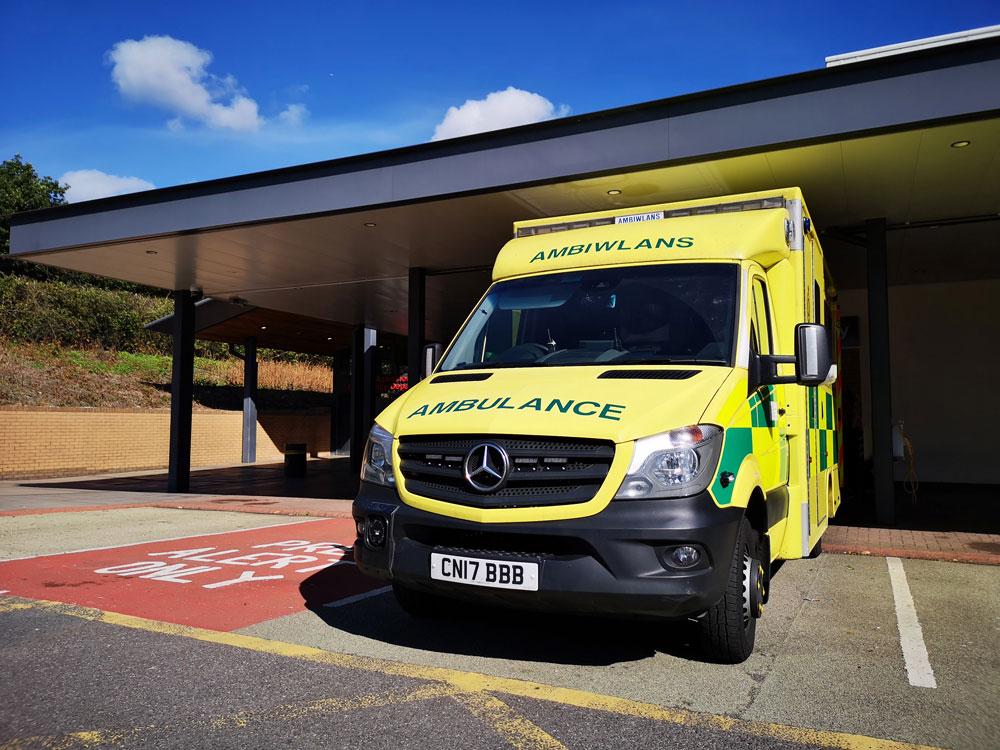As NHS England sets out plans to speed up discharge of patients and improve care in preparation for what it expects to be a “difficult” winter for the service, NHS Shared Business Services unveils a new framework agreement, designed to support hospitals with their patient discharge needs and free up beds. Uniquely, it also supports additional care in mental health settings with a Mental Health Step Down Care Beds Services offer – the provision of temporary care for those who need it until more permanent arrangements can be made.
Delays in discharge processes and limited capacity in social and community care are making it challenging for NHS hospitals and mental health services to discharge patients appropriately.
They remain inpatients, placing further strain on hospital resources, reducing the number of hospital beds available for new admissions, and at higher risk of hospital-acquired infections, loss of mobility, independence and re-admission.
Medically fit, ward confined
The latest data from NHS England (NHSE) shows that for the main, the number of patients who no longer meet the criteria to reside but remain in hospital is just shy of 12,000 daily, and analysis by The Health Foundation shows an NHS forced to cut admissions by over half a million due to a lack of beds.
With winter approaching, the NHS has set out plans with new measures to help speed up discharge for patients, improve resilience across the country and improve care.
Part of this package is the creation of care “Traffic control” centres - hubs that host NHS, social care, housing and voluntary services staff in one place, so they can locate and co-ordinate the best and quickest discharge options for patients – whether this is at home, in social care or community care.
Currently, a quarter of local areas offer this service, and NHSE plans to have them operating in every area of the country by winter to try to reduce the number of patients who are medically fit to be discharged but who remain in hospital.
It is expected that by December, a third of patients could be discharged using this model which will draw information from electronic patient records to track patients and link up with housing services.
NHSE has, in its delivery plan for recovering urgent and emergency care services, stated “its ambition to improve to 76 per cent of patients being admitted, transferred or discharged within four hours by March 2024”.
The plan also sees virtual wards (hospital-level care at home) playing an important part in expanding capacity by joining-up health and care outside of the hospital.
Virtual wards combine technology and remote monitoring and advice to allow hospital-level care, including diagnostics and treatment. They can also replace the need for admission and facilitate people being able to leave hospital sooner, safely. As such, NHSE is looking to deploy virtual ward beds to scale up capacity from 7,000 to 10,000 in autumn, ready for winter.
As part of NHSE’s ambition, Integrated Care Systems (ICSs) are expected to deliver virtual ward capacity equivalent to 40-50 virtual ward beds per 100,000 people by December 2023, with virtual ward services developed across ICSs and provider collaboratives, rather than individual institutions.
However, with in-house resources already stretched, teams on the ground across ICSs, NHS trusts, social care and local authorities may struggle to source the expertise and solutions they need to deliver their respective programmes within expected timescales and to budget.
Streamlining the transition from hospital to care, adding extra capacity
To support them, NHS Shared Business Services has released a new framework agreement, ‘Patient Discharge and Mental Health Step Down Beds Services’, developed to aid the transition of patients from hospital, by helping health and care providers access extra capacity if required.
Designed to streamline the transition from hospital to the community/care homes, it offers support in the discharge of adults and improves the patient pathway, from acute care to an appropriate care setting, thereby reducing delayed transfers of care and unavoidable re-admissions to hospital.
The framework agreement aims to: facilitate the transfer of patients from hospital beds to a more appropriate level of care; supply additional bed capacity within the NHS urgent care system infrastructure by relieving bed pressures within the local health economy; and discharge patients meeting specific clinical criteria into an appropriate care setting, reducing instances of re-admission to hospital.
It also aims to allow patients to have personalised one-to-one support maintaining continuity of care. And provide a dedicated pathway to hospital discharge management services.
Lots
It is categorised into 4 Lots (service types), each representing a combination of goods and/or services which can largely be defined as either clinical (for the NHS and healthcare organisations) or social care-based (for local authorities and housing associations).
Lot 1: Discharge to Assess Services, facilitates patient discharge not only from emergency departments but also from the wider acute hospital and community care settings.
Lot 2: Third Party Brokerage Services, supplies brokerage services for hospital patients whose needs are to be met when they are fit to be discharged from hospital.
Lot 3: Virtual Ward Support Services, supplies a “secondary care” service within a patient’s care setting for up to 6 weeks. Patients are transferred to the Virtual Ward Support Service following referral from the Trusts’ clinical discharge teams on acceptance by service leads.
Lot 4: Mental Health Step Down Care Beds Services, focused on securing Mental Health Step Down Care supported placements which must provide safe, rapid assessments with an outcome of accommodation that would support patients who are 18+ currently enduring mental ill-health and are being discharged from an acute ward, for a period of up to six weeks.
Free to access, the framework agreement provides a convenient, compliant and cost-effective means for teams across NHS health and care providers, hospital trusts, ICSs and elsewhere in the public sector, to purchase such solutions at pace and at competitive rates, from carefully vetted vendors, each of whom have undergone a rigorous process of selection.
Choice of procurement routes
There are two routes to procuring services using the framework agreement – direct award or further competition.
The direct award route allows the purchaser – subject to procurement regulations - to award a contract directly to a supplier, enabling them to obtain services at speed.
The further competition process (sometimes called mini-competition) re-opens competition under the framework agreement. Procuring parties can ask suppliers to submit proposals and costings to help them select the most appropriate services and drive further efficiencies.
Potential benefits
The framework offers several benefits including: reduced length of acute bed stays post medical discharge; reduction in acute trust unplanned re-admission rates, generating savings to participating authorities from re-admissions; reductions in cancellations of elective operations because of a lack of bed capacity; and reduction in inappropriate discharge of patients out of hours.
It also offers reduced bureaucracy and confusion around Patient Discharge processes which lead to delays for patients and adds cost to the system; enables efficient and effective communication and coordination between health and awarded providers within social care in order to meet specific patient needs; and supports adequate and timely information which must be shared between services whenever there is a transfer of care between individuals or services.
For further information contact:
sbs.hello@nhs.net





